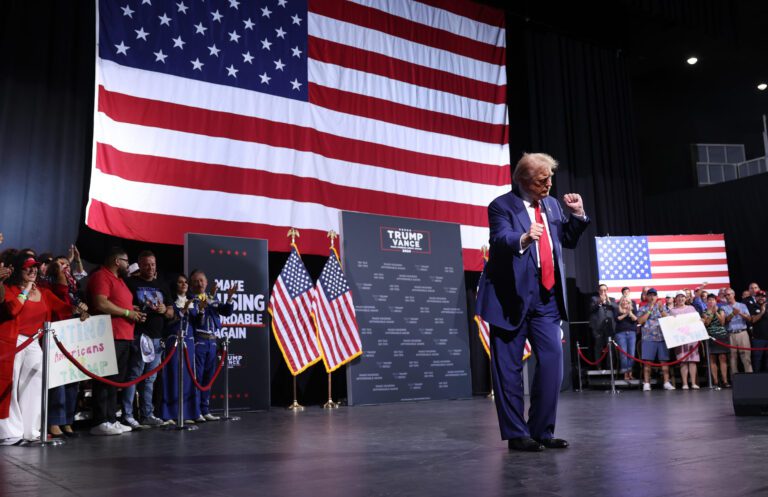U.S. Economy Surges in Q2: Trade Dynamics and Consumer Spending Drive Growth
The U.S. economy displayed robust growth in the second quarter of the year, according to the latest report from the Commerce Department. This remarkable performance, fueled by shifts in trade dynamics and strong consumer spending, caught many analysts by surprise.
Key Highlights from Q2 Economic Growth
- GDP Growth: The Gross Domestic Product (GDP) rose by 3% from April to June, a significant rebound from a 0.5% decline in the first quarter. This growth surpassed the Dow Jones economists’ expectations of 2.3%.
- Net Exports Contribution: The report indicated that net exports contributed a staggering 5 percentage points to the GDP growth.
Trump’s Reaction to Economic Performance
Former President Donald Trump was quick to respond to the report, showcasing his enthusiasm on social media. He stated:
“2Q GDP JUST OUT: 3%, WAY BETTER THAN EXPECTED!”
Trump further emphasized the need for the Federal Reserve to adjust interest rates, claiming that “No Inflation!” should lead to opportunities for consumers to refinance their homes.
Shifts in Trade Dynamics
The second quarter’s performance benefitted from a notable reversal in trade flows:
- Imports: There was a substantial 30.3% drop in imports, contrasting sharply with a 37.9% increase in the first quarter. This decline was attributed to businesses acting quickly to secure products before tariffs were announced.
- Exports: Exports slightly decreased by 1.8%, indicating some resilience amidst global trade tensions.
Background on Trade Policy
The change in trade dynamics follows previous decisions made by Trump, including declaring April 2 as “liberation day” and engaging in tense negotiations with international trading partners. While higher import taxes have been implemented, they remained less severe than earlier proposals.
Signs of Cooling Inflation
The recent economic report also revealed encouraging signs regarding inflation:
- The Personal Consumption Expenditures Price Index (PCE) rose 2.1% in Q2, just above the Federal Reserve’s target of 2%, but markedly lower than the 3.8% increase observed in Q1.
- The Core PCE, excluding the prices of food and energy, rose 2.5%, down from 3.5% in the first quarter.
Federal Reserve’s The Promising Outlook
The Federal Reserve is slated to conclude its monthly meeting soon and is expected to maintain the overnight borrowing rate within the range of 4.25% to 4.5%, a level steady since December. Despite Trump’s urging, the Fed’s strategy seems to remain unchanged.
Conclusion
In conclusion, the U.S. economy’s strong performance in Q2 highlights a significant turnaround supported by shifts in trade dynamics and consumer spending. As inflation shows signs of cooling and trade flows stabilize, the outlook remains positive. For additional insights on economic performance, visit Reuters and Bloomberg.
With ongoing developments, stakeholders will be closely monitoring the Federal Reserve’s upcoming decisions on interest rates and how they will impact the economy further.


